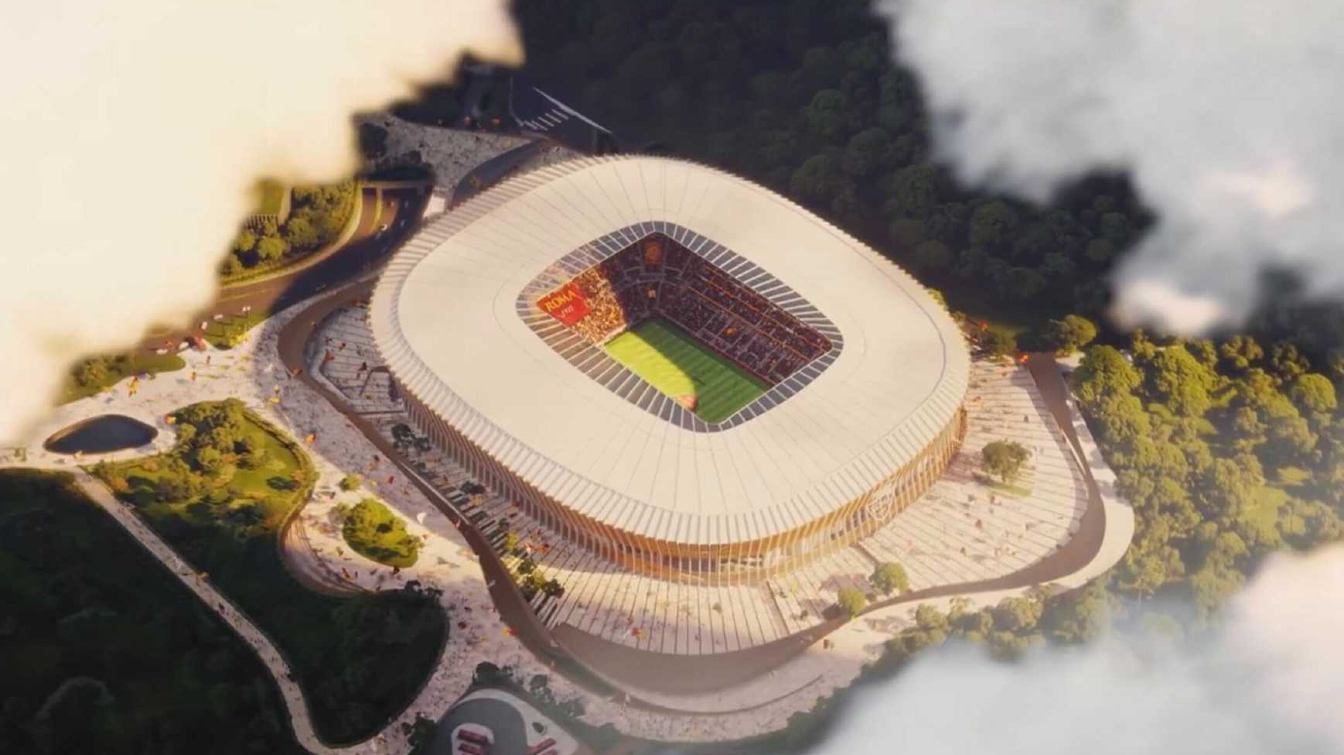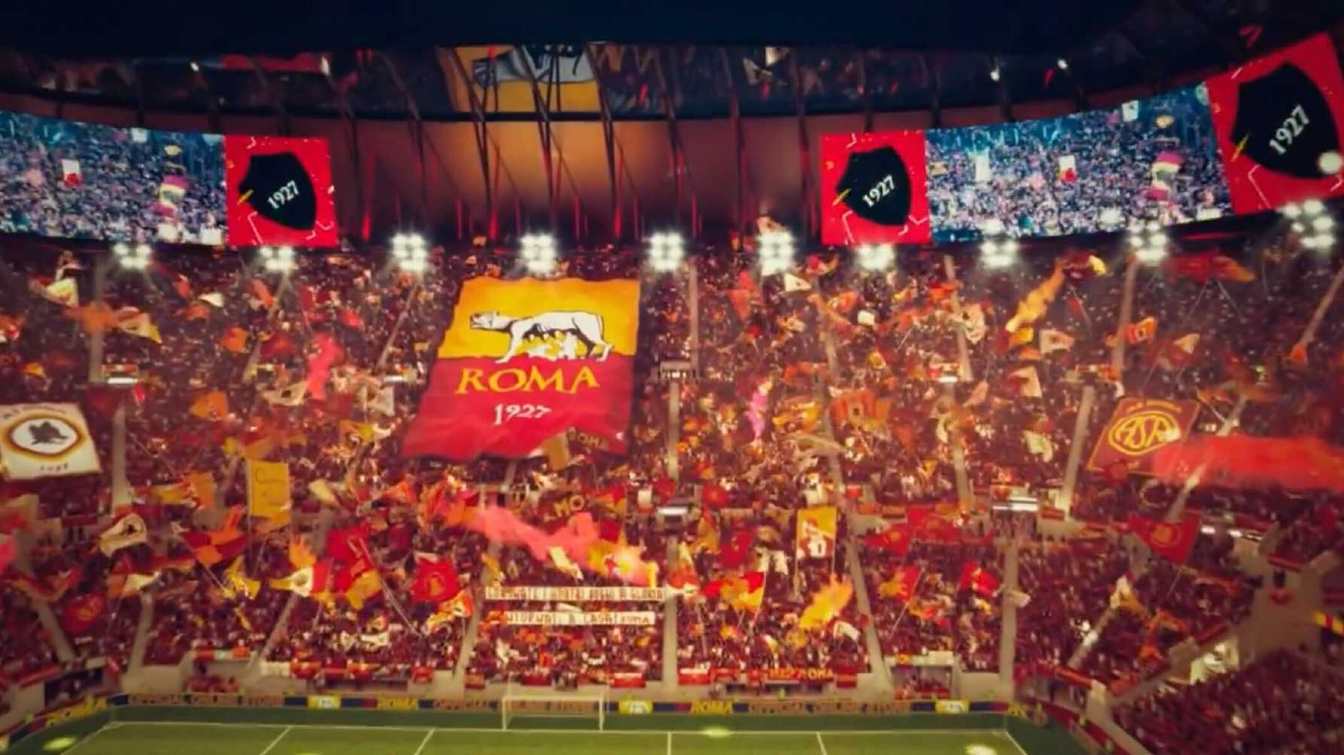Italy: New AS Roma stadium – promises, delays, and growing doubts
source: StadiumDB.com; author: Paulina Skóra
 The project to build a new AS Roma stadium in the Pietralata district of Rome continues to generate intense emotions—among supporters, residents, and institutions responsible for urban planning and archaeological oversight.
The project to build a new AS Roma stadium in the Pietralata district of Rome continues to generate intense emotions—among supporters, residents, and institutions responsible for urban planning and archaeological oversight.
Advertisement
Ongoing appeals and the tree-cutting dispute
Currently, the fourth section of the Italian Council of State is reviewing an appeal regarding the refusal to issue a safeguard order to stop the cutting of 26 trees on the site designated for the project. The case had previously been rejected by the Lazio Regional Administrative Court (TAR), which observers say makes any change of position unlikely. Nevertheless, each procedural move further delays construction, which has already been stalled for months.
These delays are especially critical in light of the FIGC’s (Italian Football Federation) decision to consider Pietralata among potential host stadiums for Euro 2032. Without significant progress, meeting the required deadlines will be extremely challenging, and, as officials admit, time is running out.
Phased project: returning to an old concept
Faced with prolonged formalities, the Rome municipal administration is returning to the idea of a phased project.
This approach would allow the club to submit a proposal meeting only those requirements that can be evaluated at the city level, while missing elements—such as full archaeological surveys—would be completed before the Conference of Services begins. The first stage of this process is expected to conclude between January and February 2026, when the Rome city administration will assess the documentation within its remit.
During a presentation of the report to the city on November 7, Mayor Roberto Gualtieri promised that the definitive AS Roma stadium project would be ready by the end of November, adding that it would be a world-class facility. These statements reignited hopes among AS Roma supporters. At the same time, activists from the Sì al Parco, Sì all’Ospedale, No allo Stadio
committee argue that the mayor’s claims are unfounded. According to them, the archaeological work—crucial for the right to submit the definitive project—has been halted since June 16, as confirmed by documentation obtained by journalists.
 © AS Roma
© AS Roma
Unable to proceed with work
In official correspondence with October’s Soprintendenza (the office responsible for protecting archaeological, artistic, and landscape heritage), AS Roma stated that although some excavations have been carried out, further progress is blocked by still-standing illegal structures, inherited by the city in 2000, as well as accumulated waste. Work is also hindered by the lack of permission to remove vegetation in an area classified as a low-value forest
and the unfinished demolition of a concrete slab at the former scrapyard. Until these obstacles are cleared, the club cannot complete the archaeological studies required to present the final project.
Special challenges have also arisen in the area of the future northern stand, where an ancient Roman cistern lies underground, long known to archaeologists. The club is now considering various technical solutions, including the ambitious integration of the ancient structure into the stadium design as a visitor-accessible space.
This is not the end of discoveries. Geotechnical surveys have revealed a network of previously undocumented underground caves and tunnels. Experts say the extent of these structures could be much larger than the already uncovered area. The residents’ committee emphasizes that it had reported the existence of these structures to the relevant institutions earlier.
Euro 2032 ambitions and tight deadlines
After the project submission—expected in early 2026—the documentation will go to the Lazio Region and the Conference of Services. The process may take up to 180 days. If all proceeds smoothly, the first construction phase could begin in 2027, with the stadium opening in the 2029/30 season.
However, this timeline is extremely ambitious. FIGC must submit a list of five stadiums for Euro 2032 to UEFA by October 2026, with cantierabili
venues—those whose construction can begin by March 2027—also eligible. Pietralata still falls within this definition, but the margin for error is minimal.
 © AS Roma
© AS Roma
Rising costs and growing ambitions
City requirements for investment in public infrastructure have nearly doubled projected costs, from €528 million to about €1.1 billion. According to recent analyses, the total economic impact of the project over 10 years is expected to reach €4 billion, with projected tax revenues of €1.8 billion and a 41% increase in local economic activity. The plan also anticipates the creation of around 2,500 new jobs. The new stadium is intended to operate seven days a week and become a full-fledged urban hub, offering a club museum, shops, restaurants, a medical center, concert spaces, a gym, and even a kindergarten.
Advertisement

 StadiumDB
StadiumDB